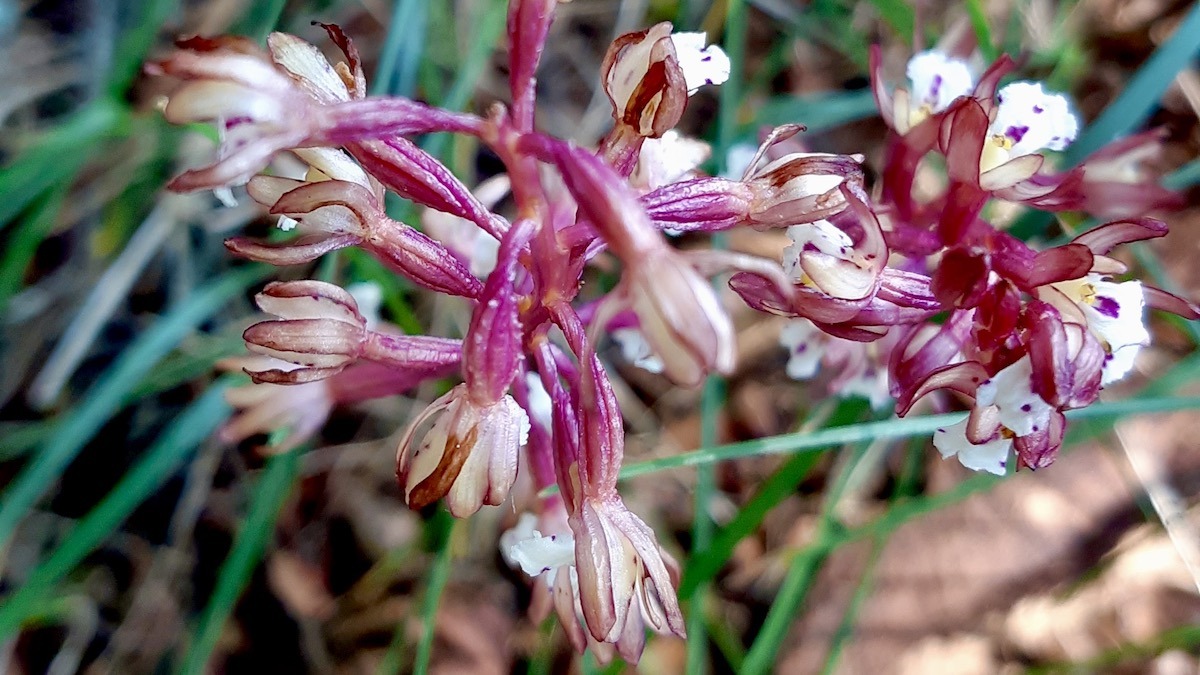
The mysterious elegance of Spotted Coralroot on the forest floor of Ontario. Photo: Jamie Bell
A Ghostly Jewel of the Forest Floor
Deep within the shaded hush of Northwestern Ontario’s forests lies an ethereal beauty: the Spotted Coralroot (Corallorhiza maculata). Unlike most forest plants, this orchid lacks green leaves. Instead, it gets its sustenance from a mysterious partnership with fungi in the soil. Its reddish-purple stalks emerge from the forest floor like delicate, spectral candles, topped with small, intricately spotted blossoms.
Finding a Coralroot feels like uncovering a secret, a glimpse into the hidden wonders that unfold in the dappled light beneath the ancient trees of Canada’s boreal forest. For our summer art program, discovering these rare orchids has been a highlight, inspiring deep appreciation for the hidden gems of nature.
The Spotted Coralroot is simply a marvel to observe; it’s not a plant with food uses. As a mycoheterotrophic orchid, it doesn’t photosynthesize. It relies entirely on a complex relationship with fungi that are themselves connected to tree roots. This makes it a fascinating example of the intricate web of life beneath the forest canopy, a reminder of how much goes on unseen. Its very existence highlights the delicate balance and specialization within forest ecosystems in Ontario, providing rich material for storytelling about the interconnectedness of life.
Because of its unique life cycle and reliance on specific fungal partners, Coralroot should never be disturbed or harvested. Its beauty is best admired in its natural habitat – a fleeting and precious bloom that speaks volumes about the complexity and interconnectedness of life in the wild. Its presence indicates a healthy, undisturbed forest floor, making it an ecological indicator as much as a botanical treasure for Northwestern Ontario. Capturing its subtle allure through photography in its natural setting has been a challenging but rewarding exercise for our program participants.




